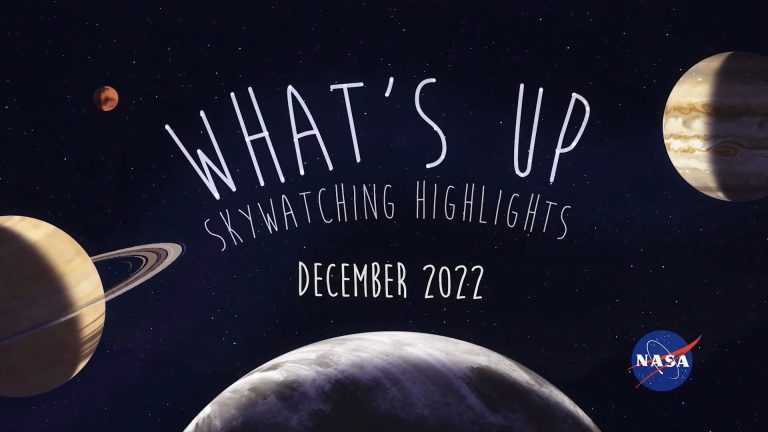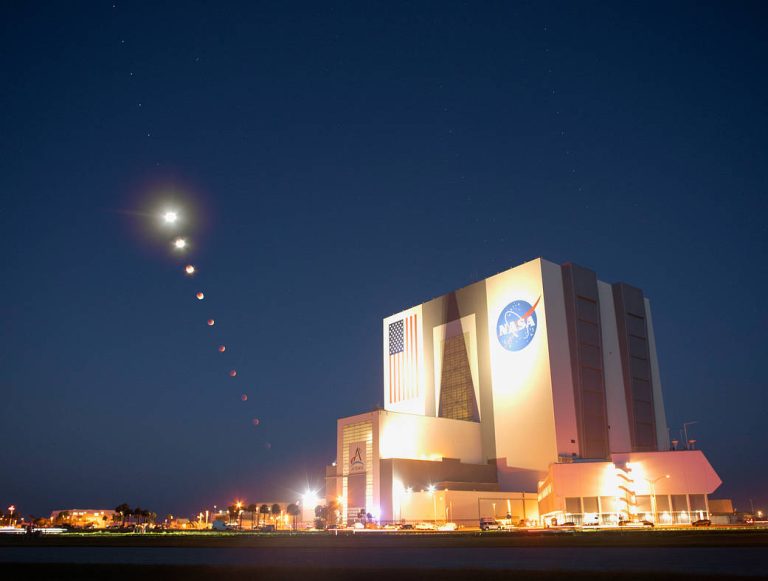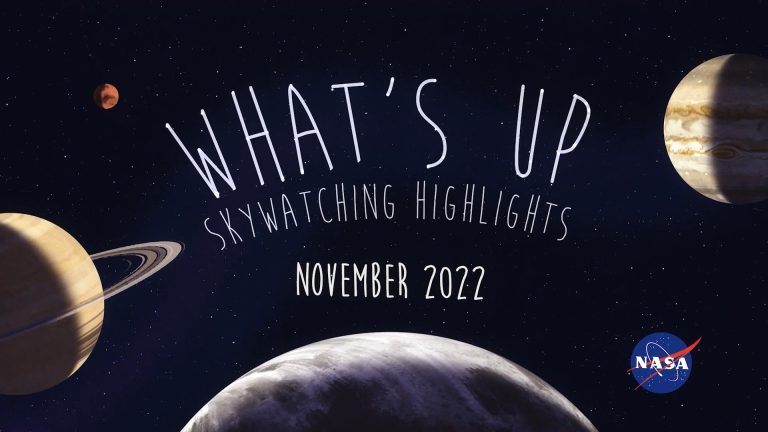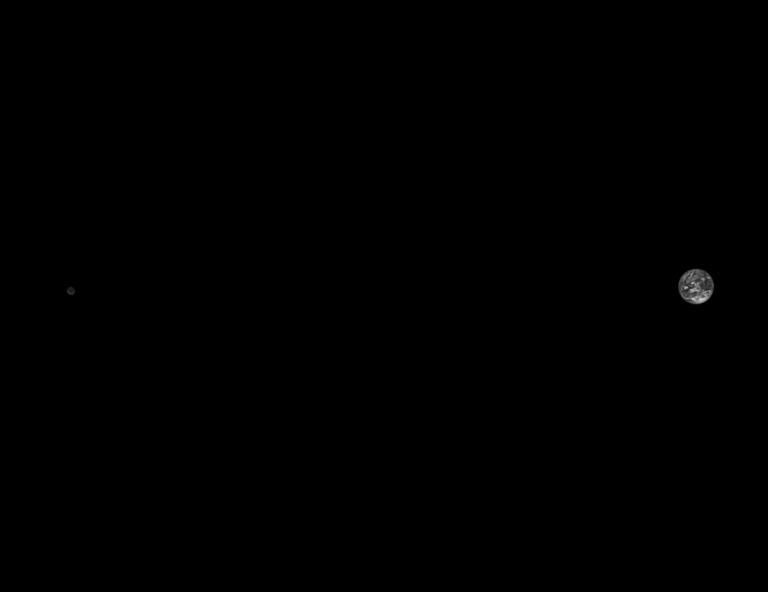观星指南(2023年2月)
2月份的天空会发生什么?
最亮的行星聚集在一起,御夫座和两个你可能想要了解的天狼星星团。

2月份的天空会发生什么?
最亮的行星聚集在一起,御夫座和两个你可能想要了解的天狼星星团。

1月份的天空会发生什么?
行星会有一些近距离的相遇,冬天的明亮恒星,还有机会观测彗星。

On flight day 20 of the Artemis I mission, Dec. 5, 2022, Orion captured the Moon on the day of return powered flyby, the final major engine maneuver of the flight test. The burn, which used the spacecraft’s main engine on the European-built service module, lasted 3 minutes, 27 seconds, and changed the velocity of the spacecraft by about 655 mph (961 feet per second). It also committed the spacecraft to a Dec. 11 splashdown, which will air live on NASA Television, our website, and the NASA app. Follow Orion’s journey by visiting the Artemis I blog. Image Credit: NASA 2022年12月5日,在阿尔忒弥斯1号任务的第20天,猎户座在返回动力飞越的当天拍摄了月球得照片,这是飞行测试的最后一次主要发动机机动。这次点火使用了欧洲制造的服务舱上的航天器主发动机,持续了3分27秒,使航天器的速度改变了约655英里/小时(961英尺/秒)。它还承诺将在12月11日进行航天器溅落,届时将在NASA电视、我们的网站和NASA应用程序上直播。 通过访问阿尔忒弥斯1号博客,关注猎户座的旅程。 图片来源:NASA

12月的天空会发生什么?你的夜晚行星的亮点,包括火星的消失和天马座。

2022年11月21日,在阿尔忒弥斯1号任务的第六天,猎户座飞船的光学导航相机拍摄到了月球下方陨石坑的黑白图像。这张照片和其他拍摄到的照片是自阿波罗号以来从载人飞船上拍摄的离月球最近的照片。光学导航相机以不同的相位和距离拍摄地球和月球的黑白图像;这项技术演示将有助于证明其在未来载人任务中的有效性。

On Nov. 20, the fifth day of the 25.5-day Artemis I mission, a camera mounted on the tip of one of Orion’s solar array wings captured this footage of the spacecraft and the Moon as it continued to grow nearer to our lunar neighbor. The spacecraft entered the lunar sphere of influence at 2:09 p.m. EST, making the Moon, instead of Earth, the main gravitational force acting on the spacecraft. Orion completed its first flyby on the morning of Nov. 21, 2022. Follow Orion’s journey by visiting the Artemis I blog. Image Credit: NASA 11月20日,为期25.5天的阿尔忒弥斯一号任务的第五天,安装在猎户座一侧太阳能阵列翼尖上的摄像机拍下了这段航天器和月球的画面,画面中是猎户座航天器和续靠近航天器的月球邻居。 美国东部时间下午2点09分,航天器进入月球影响范围,使月球取代地球成为作用于航天器的主要引力。猎户座于2022年11月21日上午完成了首次飞越。 通过访问阿尔忒弥斯一号博客了解猎户座的旅程。 影像来源:NASA

This composite made from ten images shows the progression of the Moon during a total lunar eclipse above the Vehicle Assembly Building, Nov. 8, 2022, at NASA’s Kennedy Space Center in Florida. Visible trailing the Moon in this composite is Mars. For North America, the partial eclipse began at 4:09 a.m. EST, with totality beginning at 5:16 a.m. One feature of a total lunar eclipse is the Moon’s red hue during totality. The red color occurs because of the refraction, filtering, and scattering of light by Earth’s atmosphere. Image Credit: NASA/Joel Kowsky 2022年11月8日,在NASA位于佛罗里达州的肯尼迪航天中心,这张由十张照片合成的照片显示了月球在月全食期间的进程。在这张合成图中,可以看到尾随月球的火星。 在北美,月偏食开始于美国东部时间凌晨4点09分,月全食开始于凌晨5点16分。月全食的一个特征是全食期间月亮的红色色调。红色的出现是因为地球大气层对光的折射、过滤和散射。 影像来源:NASA/Joel Kowsky

11月的天空会发生什么?月食,月球和行星,以及狮子座流星雨。

On Oct. 13, 2022, NASA’s Lucy spacecraft captured this image of the Earth and the Moon from 890,000 miles (1.4 million km) away. The image was taken as part of an instrument calibration sequence as the spacecraft approached Earth for its first of three Earth gravity assists. These Earth flybys provide Lucy with the speed required to reach the Trojan asteroids — small bodies that orbit the Sun at the same distance as Jupiter. On its 12-year journey, Lucy will fly by a record-breaking number of asteroids and survey their diversity, looking for clues to better understand the formation of the solar system. The image was taken with Lucy’s Terminal Tracking Camera (T2CAM) system, a pair of identical cameras that are responsible for tracking the…

十月份的天空会发生什么?夜晚有巨行星,火星改变方向,来自猎户座的流星。